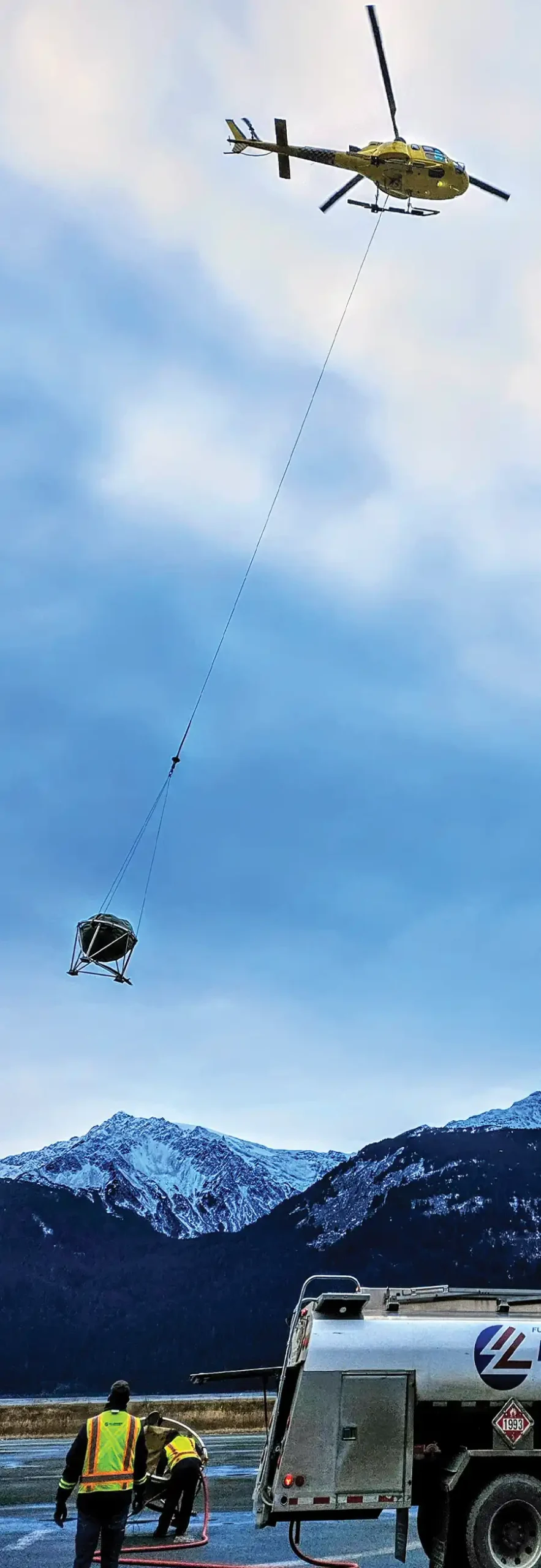
n September of 1975, the containership SS Great Land, owned and operated by up-and-coming domestic shipping company Totem Ocean Trailer Express (TOTE), left Seattle on her maiden voyage to Anchorage. Seven years later, a group of investors came together to form a new partnership to acquire TOTE and its ocean-liner service. They named their partnership Saltchuk, Chinook jargon for “saltwater.”
Saltchuk’s purchase of TOTE in 1982 was followed by the acquisition of a portfolio of Alaska-based operating companies, all integral to the state’s critical infrastructure and supply chain.
“It’s humbling and exciting to be a Saltchuk company in Alaska,” says Art Dahlin, vice president and Alaska general manager for TOTE. “If you live in Alaska, the car you drive, the food you eat, and the clothes you wear likely arrived on a TOTE ship. Once the ship is docked at the port, produce from a trailer on board can be on the shelves of your local grocery store within two hours. Our vessels also serve the oil and gas industry, the mining industry, and the military—vital segments of the Alaska economy.”
Those sentiments are echoed by Dahlin’s counterpart at Cook Inlet Tug & Barge (CITB), Jeff Johnson. “Saltchuk companies in Alaska all offer unique and necessary services to keep supplies, infrastructure, and the Alaskan way of life moving forward,” says Johnson, CITB president and a fourth-generation Alaskan. “What we do matters because it’s our own families, friends, neighbors, and fellow Alaskans who benefit from what we do.”
Garvey grew up spending summers in Alaska, where his aunt and uncle lived. But that summer, when he looked around Nome, all he saw was powdered milk, canned fruits and vegetables—and an opportunity.
In 1966, two years after graduating from the University of Washington’s law school, Garvey co-founded a law firm with classmates Bill Houger and Kenneth Schubert. Unable to find clients, Garvey began dabbling in the buying and selling of companies, eventually gathering investors to purchase the floundering TOTE—Bob McMillen, Ev Trout, and Len Shapiro were employed at TOTE in 1982; Stan Barer, Garvey, and Fred Goldberg were outside investors.
TOTE lost money in the years before Saltchuk’s investment. But as oil flowed through the Trans Alaska Pipeline System, the demand for goods from the Lower 48 grew and, with it, TOTE’s profitability.
In 2000, Saltchuk diversified into energy distribution, adding Delta Western Petroleum and, in 2005, Inlet Energy to its portfolio. One year later, Saltchuk’s first air cargo company, Northern Air Cargo, joined the family alongside sister company Northern Air Maintenance Services. In 2011, Saltchuk acquired CITB, followed by iconic Alaska trucking company Carlile Transportation in 2013, Alaska Petroleum Distributing in 2019, and Naniq Global Logistics in 2020. Bush freight carrier Ryan Air joined the Saltchuk family of companies in 2022, adding eight hubs and access to seventy-two remote, rural communities, “closing the loop” on Saltchuk’s end-to-end supply chain in the state.
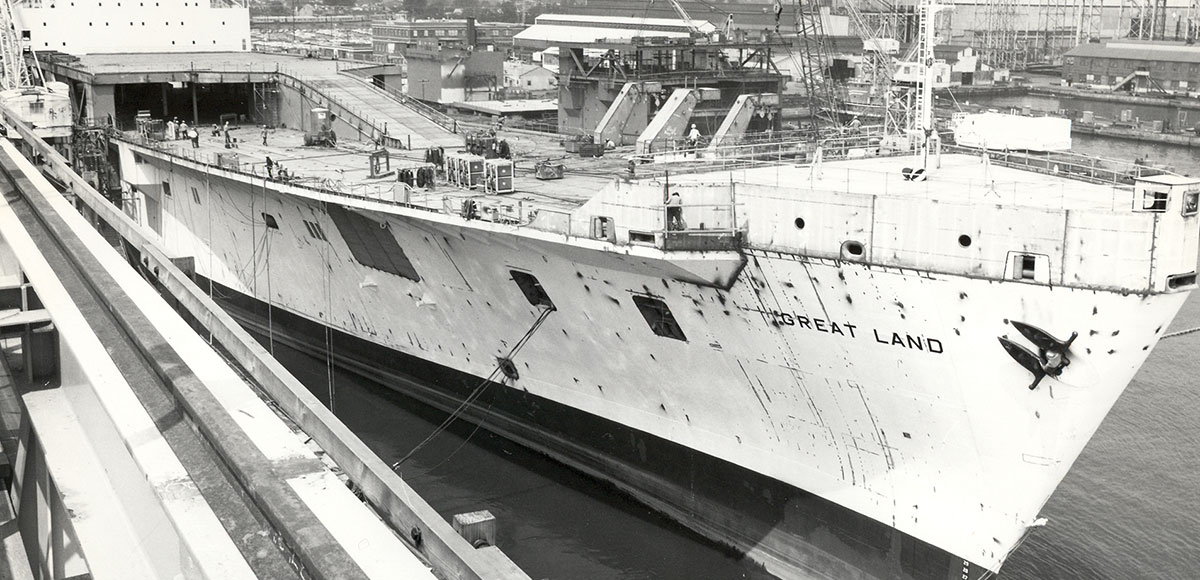
Much like Garvey witnessed in Nome, Ryan recalls his early childhood in a remote village almost completely devoid of fresh produce.
“When I was growing up, if bananas showed up at all, they were already ready for banana bread,” he says with a laugh. “The lettuce was crystallized; the tomatoes were halfway to tomato sauce. Nowadays, thanks in part to modern technology and the strengthening of the supply chain here, people can receive produce that’s fresh and ice cream that’s frozen. They’re able to support their subsistence lifestyle with Western food products like anyone living in a city. And that can make a big difference in people’s health and quality of life.”
In all, Saltchuk boasts thirty-four operating companies across the country, the Caribbean, and South America, spanning the freight, energy, and marine transportation industries. Nine Saltchuk companies serve Alaska, representing 47 percent of the company’s $2.1 billion worth of fixed assets and 30 percent of its 2023 $4.8 billion combined annual revenue.
Northern Air Cargo
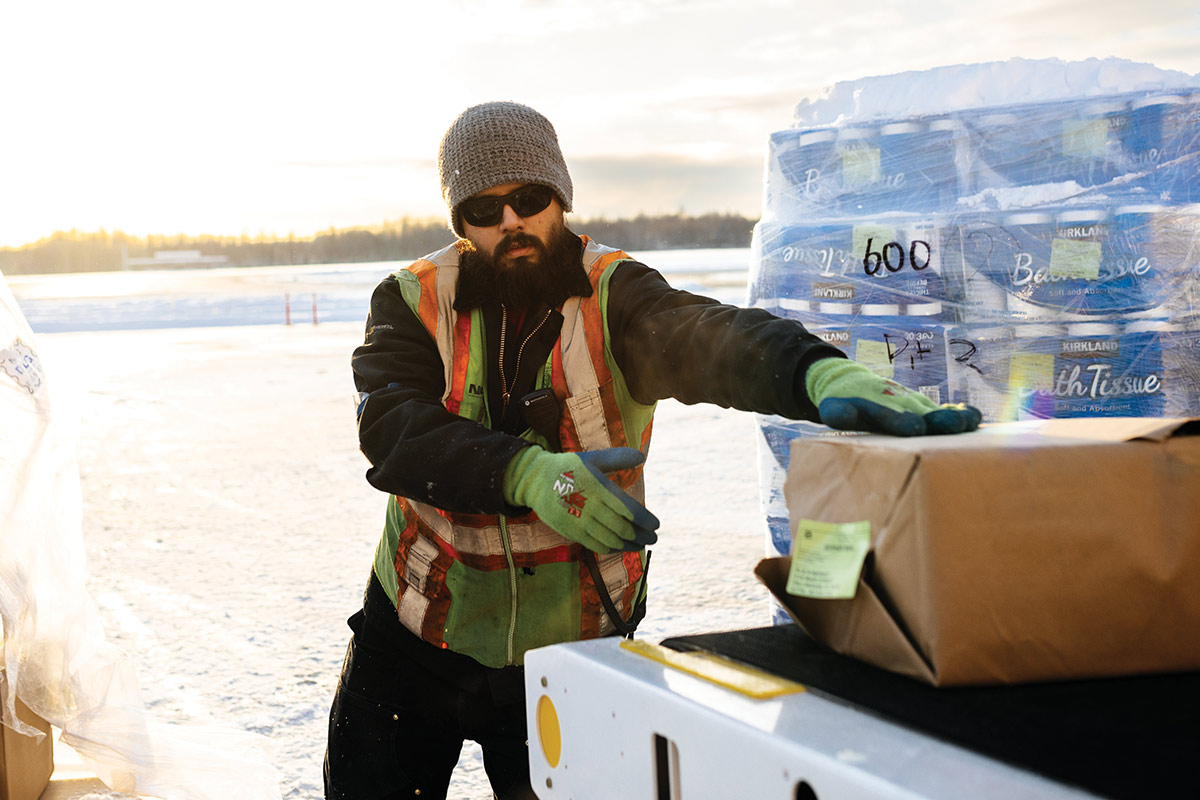
“Our strength is in our independence and our autonomy,” says Dave Karp, senior vice president and managing director of Saltchuk in Alaska. “Most of our thirty-four operating companies retained their local leadership teams after joining our family of companies. Within a set of shared values and parameters, decisions are made by the people who know the market best.”
Saltchuk also sees some value in not vertically integrating all of its business lines.
“Since Saltchuk is not vertically integrated, we are better able to customize our services to what is best for our customers,” Dahlin explains. “At times, this means a solution that involves sister companies. Other times, it makes more sense to use other key partners. In the end, our goal is to be best in class in the markets we serve. Saltchuk’s structure allows us to do that.”
One area where the company integrated only partially is its fuels distribution services. Saltchuk formed NorthStar Energy (NSE) in 2006 as its energy business unit overseeing Alaska Petroleum, Delta Western, and Inlet Energy in Alaska. Henry Palmer is the president of NSE’s Alaska energy companies.
“Recently, sizable market shifts and logistic constraints have become the norm instead of a rarity, and the task of reliably delivering to remote communities on and off the road system has become much more challenging,” Palmer says. “Saltchuk’s decision to not vertically integrate allows our Alaska companies to respond quickly to significant shifts in customer demand by going to market and partnering with vendors best suited to meet the customer’s needs for the event duration. Saltchuk companies have the flexibility and agency to always do what is in the best interest of their customers.”
Investments like these help Saltchuk companies ensure year-round stability. Another example is the TOTE fleet.
“TOTE’s Orca Class vessels were built for Alaska,” Dahlin explains. “They are ice-classed, have redundant systems, and hold freight that is not exposed to the weather during the transit between Tacoma and Anchorage. The purpose of this design is to consistently serve Alaska, which TOTE has been doing for forty-nine years.”
Meanwhile, since Anchorage and Cook Inlet experience the second-largest tidal change in the world—up to 38 feet of tidal change in six hours—CITB invested in four state-of-the-art Z-drive “tractor tugs” and a floating facility along the Anchorage waterfront that allows the company to work year-round in severe weather.
“In the past five years, we’ve taken great strides to place ourselves as the supplier of choice for shallow-water capable vessels,” Johnson says. “We’ve acquired five unique tugs operating in Western Alaska and along the Arctic coastline, from Bristol Bay to the Northern Canadian border. Our tugs and highly skilled crews are uniquely placed and capable of helping the construction, mining, government, and oil and gas industries during the typically short ice-free summer season.”
Johnson adds that CITB recently renewed its commitment to the Port of Seward by retiring an older tug and chartering in a newer one to continue providing support to long-time customers in Seward. Last year, the company grew its Seward fleet and began operation of a specially built Pilot Boat, creating both a safer and more efficient way to transfer ship pilots to and from the cruise line vessels and cargo ships that arrive.
Delta Western
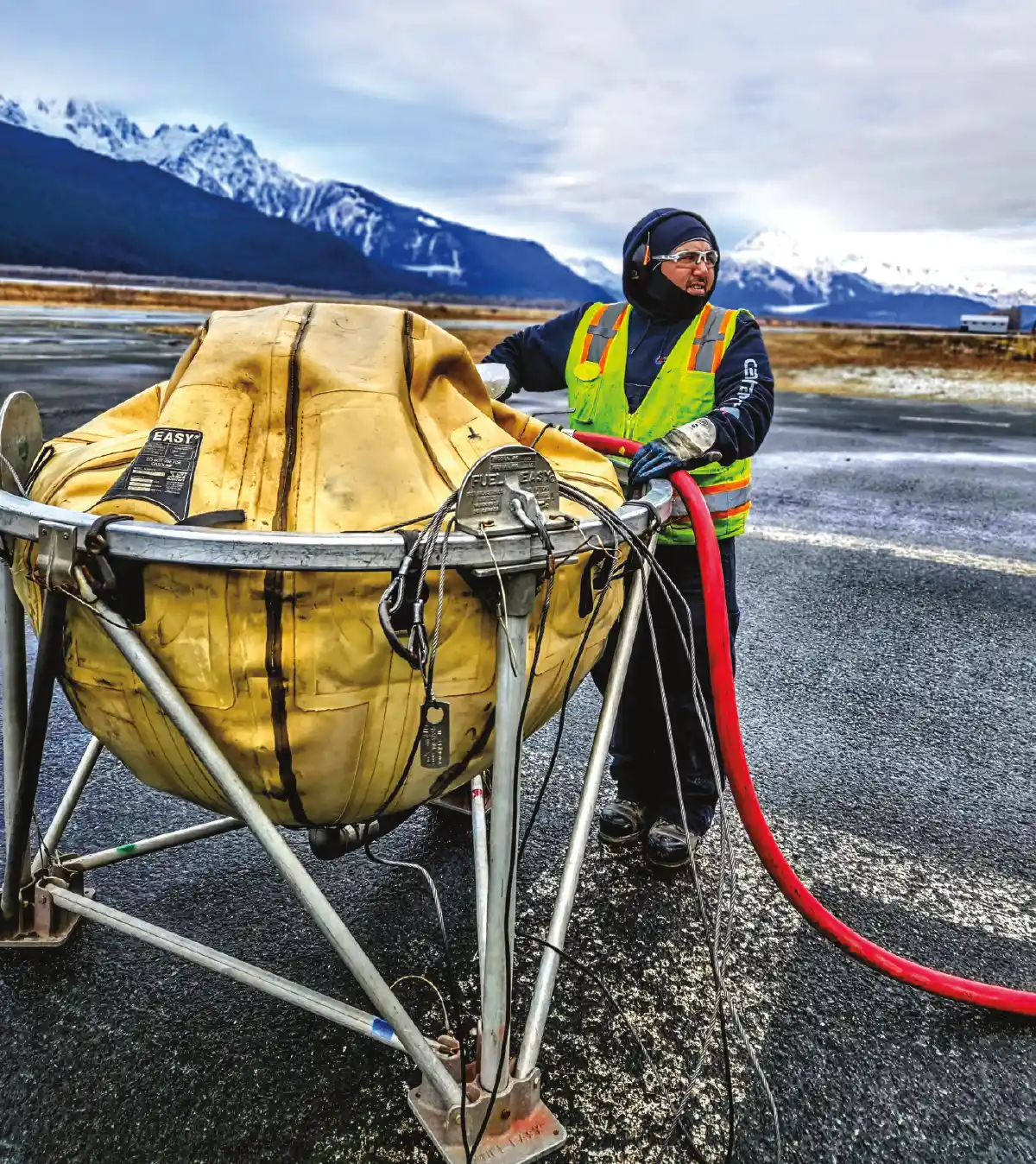
TOTE
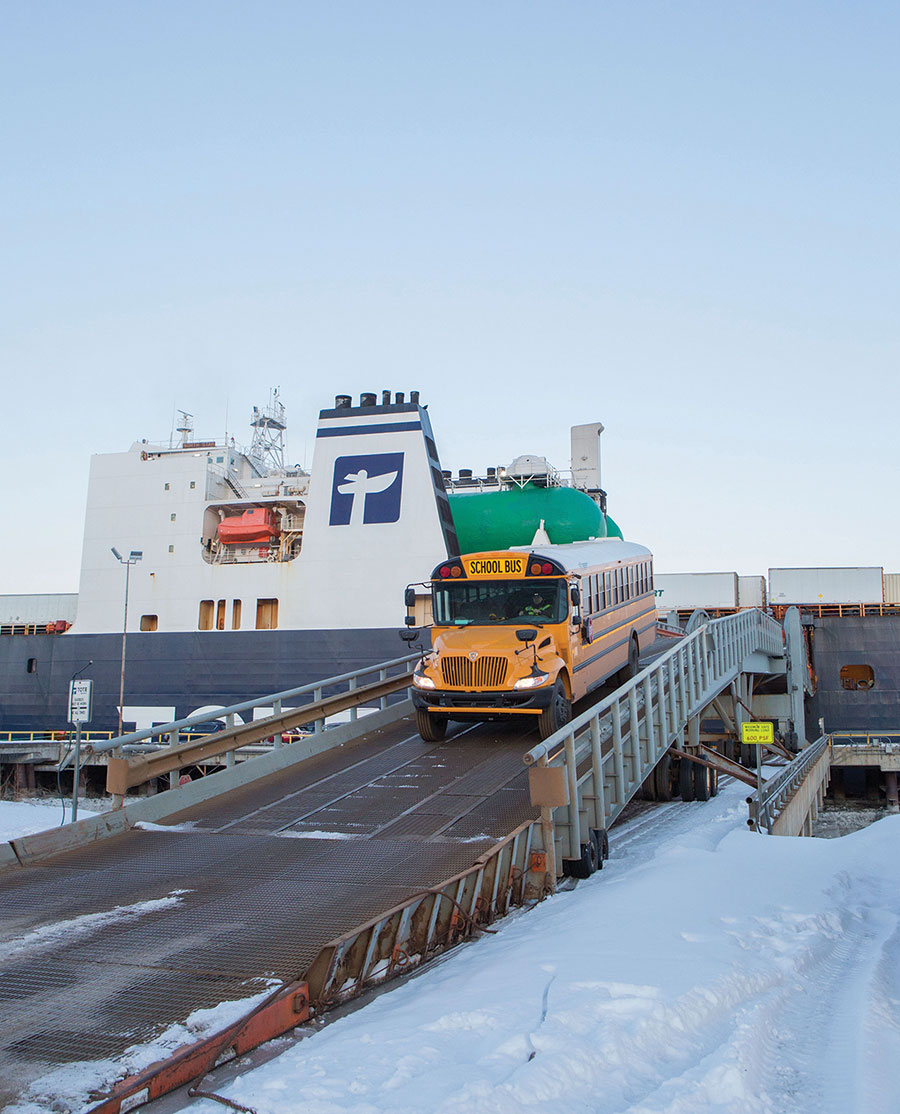

Melanie Kobuk | Ryan Air
“Our sister company [Northern Air Cargo] brought the donated water to Nome, but we know in a situation like that, we’re the only ones with the infrastructure to deliver to the bush,” Ryan says. “I got on the phone with Dave [Karp] while the storm was still raging. He asked, ‘What are the villagers going to need?’ and I told him they needed potable drinking water yesterday, not tomorrow.”
The responsibility goes beyond air cargo. “TOTE and the whole Saltchuk family of companies are committed to Alaskans in times of emergency,” Dahlin says. “With our dedicated terminals and purpose-built ships, we did not see the supply chain disruptions to Alaska during the COVID pandemic that major West Coast ports saw, with ships waiting weeks to unload. We worked with our employees, the heart of our company, to adapt processes to ensure we could safely serve the people of Alaska.”
With short fuel delivery windows between storm systems and freeze cycles, NSE is a lifeline to the families and communities of Alaska.
“Limited supplier options in many of our communities mean our operations must be reliable and resilient. Our teams operate around the clock to provide access to quality fuel that sustains rural Alaskan life,” Palmer says.
Johnson agrees. “Being wholly Alaska-based and operated—we are here,” he says. “We cooperate with the Ted Stevens [Anchorage International] Airport to assure vessel support should there be a waterborne aviation incident, as well as with the Port of Alaska where, after the November 2018 earthquake, CITB provided a tug to survey the port and its terminals, providing a safe platform for engineers to assess the structure integrity for a quick resumption of port services desperately needed for all Alaskans.”
To that, Ryan adds, “What people don’t understand is that there are a lot of people who want to help when disaster strikes. But it’s not just that we want to help. It’s that our team is from these villages. They are agents in these villages. We know the long-term impact of losing your camp, of losing where your grandparents lived. We feel that. We know that.”
Karp calls Saltchuk a “long-term investor in Alaska,” and Dahlin agrees. “From our first sailing in 1975 to our 5,000th sailing to Alaska earlier this year, we are committed to the State of Alaska,” he says.
And that goes for the component companies that have become part of the Saltchuk structure. “We’ve been a family company for more than seventy years,” Ryan says. “We know that, to have an impact beyond our current scope, we need partners. Fortunately, our new family, our Saltchuk family, is allowing us to prepare for the next seventy years of serving Alaska.”
